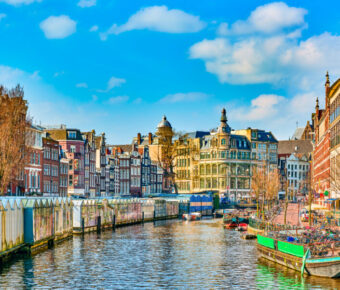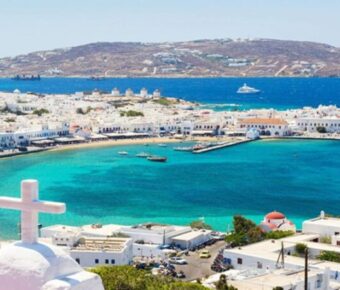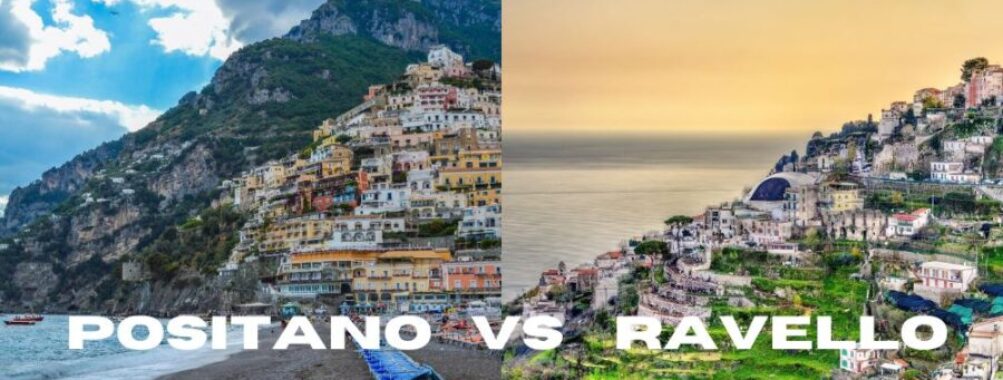
Positano vs Ravello: Which Stunning Amalfi Coast Town Is Worth Your Time in 2025
The spectacular Amalfi Coast offers two enchanting towns that couldn’t be more different. Positano cascades down the cliffside in a dramatic tumble of pastel buildings, while Ravello perches high above the Mediterranean like an elegant eagle’s nest. Each town casts its own unique spell on visitors.
Most travelers prefer Positano as an ideal base with its beachfront location, wider selection of restaurants and hotels, and easier transportation access via ferry and bus connections. The town pulses with energy as visitors explore its steep lanes filled with boutiques and cafes, or lounge at scenic beach clubs below the colorful buildings.
Ravello offers a more peaceful, refined experience with its aristocratic gardens and stunning coastal views from 1,200 feet above sea level. The smaller size and higher elevation mean fewer crowds but more effort to reach the beaches and other Amalfi Coast towns.
Contents
- Geographical Context and Accessibility
- Location on the Amalfi Coast
- Transport Options to and Around Positano and Ravello
- Historical Significance
- Ravello’s Cultural Heritage
- Positano’s Transformation from Fishing Village to Resort
- Accommodation and Amenities
- Hotels and Villas in Positano
- Ravello’s Tranquil Retreats
- Attractions and Sightseeing
- Ravello’s Stunning Views and Gardens
- Positano’s Beaches and Coastal Charms
- Dining and Cuisine
- Culinary Experiences in Positano
- Gastronomic Delights of Ravello
- Leisure Activities
- Exploring the Waters of the Amalfi Coast
- Shopping and Leisure in Ravello and Positano
- Best Times to Visit
- Seasonal Considerations for Positano
- Choosing the Right Time for Ravello
- Conclusion
- Frequently Asked Questions
- What are the unique experiences Positano offers compared to Ravello?
- How do the vibes and attractions in Ravello differ from those in Positano?
- Can you describe the logistical differences between traveling to Positano and Ravello?
- What kind of accommodation options can one expect in Ravello versus Positano?
- How can travelers plan a seamless day trip to Positano, Amalfi, and Ravello?
- Are there certain times of the year when visiting Positano or Ravello is particularly recommended?
- More Travel Guides
Geographical Context and Accessibility
The coastal geography and transport infrastructure shape access to these two stunning Italian destinations. Each town offers distinct advantages based on its position along the Amalfi Coast.
Location on the Amalfi Coast
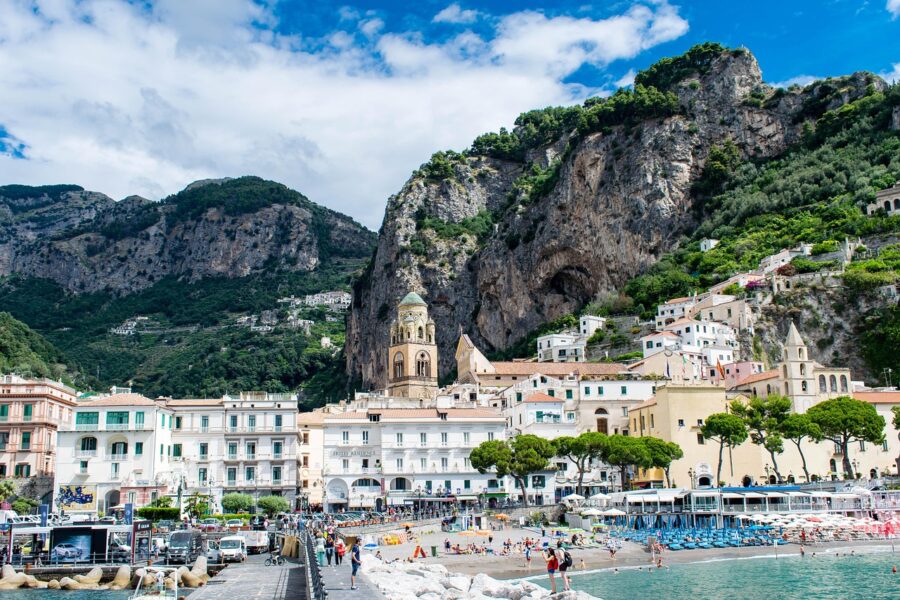
Positano sits directly on the coastline, built into steep cliffs that cascade down to the Tyrrhenian Sea. Its position makes it a natural starting point for exploring the region.
Ravello perches 365 meters above sea level on the cliffs, set back from the coast. This elevation creates breathtaking views of the entire coastline.
Both towns connect to the main SS163 coastal highway, though Ravello requires an additional winding road up the mountain.
Transport Options to and Around Positano and Ravello

Getting to Positano is straightforward with multiple options. Search flights into Naples Airport, then take a ferry from Naples or Sorrento during summer months for €20.
SITA buses run year-round from Sorrento to Positano for €2-3, though they get crowded in peak season.
Reaching Ravello takes extra planning. No direct ferries serve the town – visitors must first travel to Amalfi town, then catch a bus or taxi up the mountain.
Walking is the main way to explore both towns. Positano’s steep steps lead to hidden beaches and viewpoints. Ravello’s compact size makes it perfect for strolling between gardens and piazzas.
Taxis serve both locations but charge premium rates, especially for the winding uphill journey to Ravello.
Historical Significance
Both Positano and Ravello hold fascinating places in Italian history, each town’s past shaping their unique modern-day character. The towns evolved quite differently over the centuries, creating distinct cultural identities.
Ravello’s Cultural Heritage

The hilltop town of Ravello flourished during the Middle Ages as part of the Maritime Republic of Amalfi. Its stunning villas and gardens attracted countless artists, musicians, and writers seeking inspiration. Richard Wagner composed parts of his opera Parsifal here in 1880.
Villa Rufolo, built in the 13th century, stands as a testament to Ravello’s golden age. Its Moorish-influenced architecture and magnificent gardens hosted nobility for centuries.
The town became a favorite retreat for intellectuals like Virginia Woolf and Gore Vidal. Their presence helped establish Ravello’s reputation as a cultural hub.
Positano’s Transformation from Fishing Village to Resort
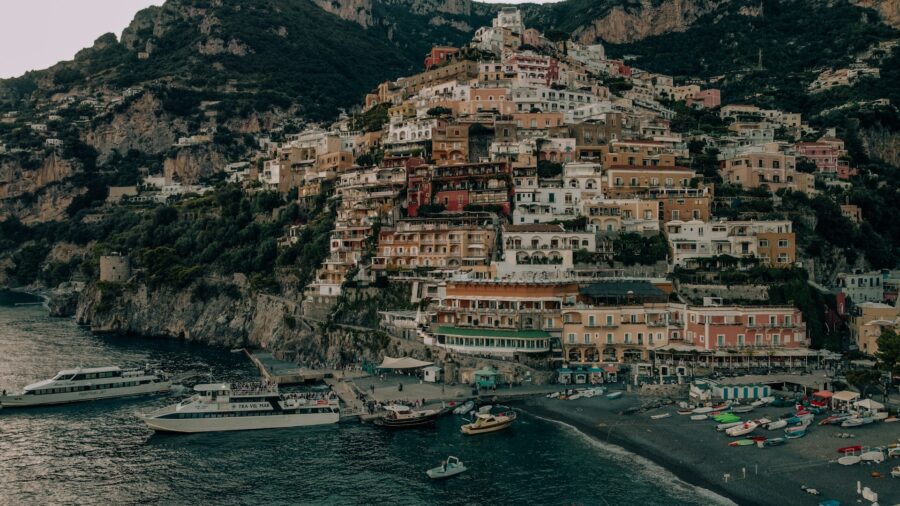
Positano started as a humble fishing village in ancient Roman times. Wealthy merchants built watchtowers in the 15th century to spot pirates approaching from the sea. Some of these towers still stand today.
The town faced economic decline in the 1800s, causing many residents to emigrate to America. Everything changed in the 1950s when John Steinbeck wrote about Positano in Harper’s Bazaar.
The article put this little-known village on the map. Artists and celebrities soon discovered its charm, transforming Positano from a poor fishing community into an exclusive Mediterranean destination.
Local fishermen’s homes became boutique hotels. The town’s signature colorful houses climbing up the cliffside were originally painted different colors so sailors could spot their homes from the sea.
Accommodation and Amenities
From luxury hotels to charming villas, both Positano and Ravello offer distinct lodging experiences that cater to different travel styles and budgets. Each town’s accommodations reflect their unique character and location.
Hotels and Villas in Positano

Positano’s accommodations cascade down the cliffside, offering stunning sea views from nearly every room. The town has a mix of high-end hotels and vacation rentals that suit various budgets.
Many hotels feature private balconies and terraces where guests can enjoy breakfast while watching boats cruise the Mediterranean. The rooms often showcase local design elements like hand-painted tiles and whitewashed walls.
The beachfront hotels give easy access to the water and vibrant town life. Most properties include amenities like pools, restaurants, and spa services.
Ravello’s Tranquil Retreats
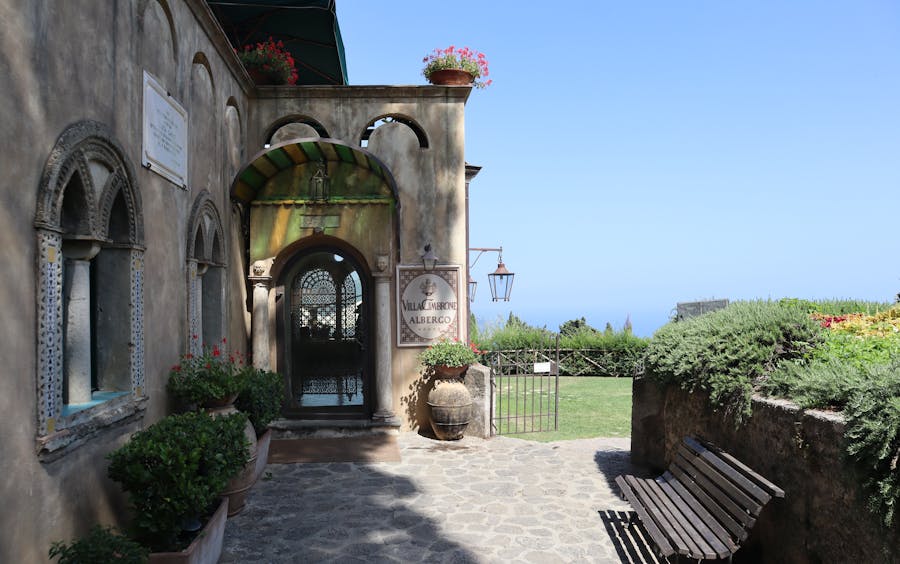
Ravello specializes in villa stays, with fewer traditional hotels than Positano. The historic Villa Rufolo and Villa Cimbrone have been transformed into luxury accommodations with gardens and panoramic views.
The town’s peaceful hilltop location makes it perfect for quiet getaways. Most villas come with private pools and spacious terraces.
Room rates tend to be lower than in Positano, especially during peak season. Villa Amore and other boutique properties offer intimate settings with personalized service and home-like comfort.
The accommodations are more spread out, giving guests extra privacy and space to relax away from tourist crowds.
Attractions and Sightseeing
Both towns offer distinct experiences that attract different types of travelers. Ravello captivates with its hilltop gardens and panoramic views, while Positano draws visitors to its colorful beaches and seaside charm.
Ravello’s Stunning Views and Gardens
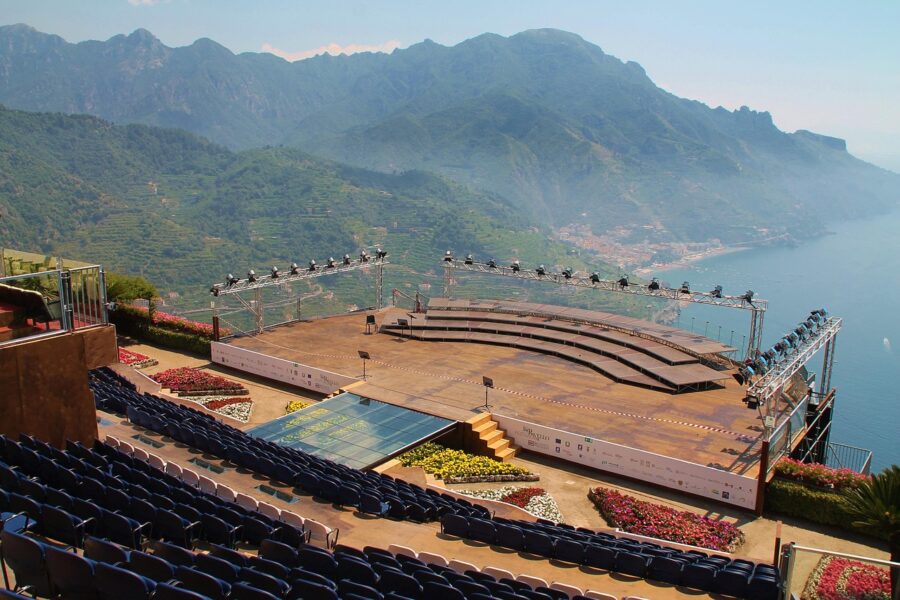
Villa Cimbrone stands as Ravello’s crown jewel, featuring the famous Terrace of Infinity with its ancient marble busts gazing out over the Mediterranean. The villa’s gardens bloom with roses and rare plants, creating perfect spots for photos.
Villa Rufolo dazzles visitors with its Moorish architecture and terraced gardens. The villa hosts summer concerts where musicians perform against a backdrop of sea and sky.
The town’s elevated position at 1,200 feet above sea level creates magical views at every turn. Small cafes tucked into corners offer peaceful spots to take in the scenery.
Positano’s Beaches and Coastal Charms
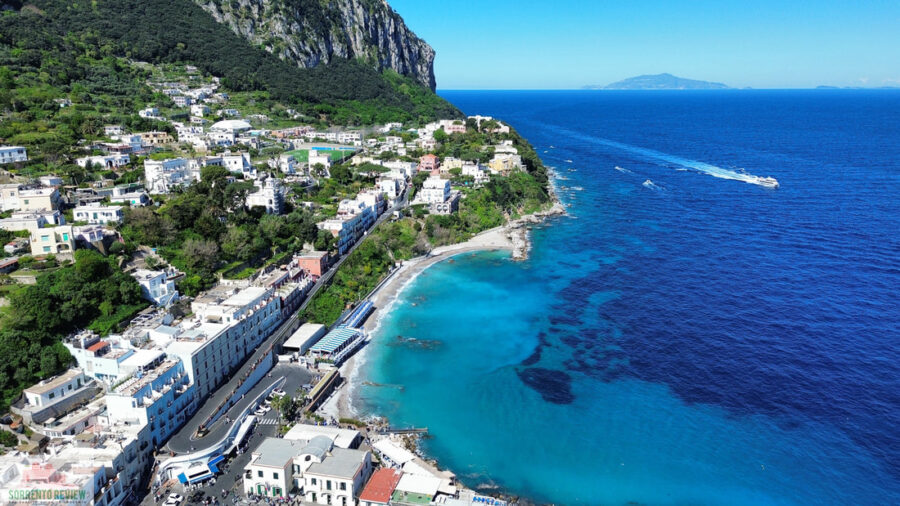
Marina Grande Beach sits at the heart of Positano, lined with colorful umbrellas and buzzing with energy. Local boats offer trips to hidden coves and secluded swimming spots.
Fornillo Beach provides a quieter alternative just a short walk from the center. This pebbly stretch features fewer crowds and authentic beach bars serving fresh seafood.
The town’s steep pathways wind past boutiques and ceramic shops painted in pastel colors. Each turn reveals new views of the dome of Santa Maria Assunta church against the backdrop of cliffs meeting sea.
Small restaurants built into the hillside serve up fresh catches while offering stunning views of the coast. The evening light creates perfect photo opportunities as the sun sets over the water.
Dining and Cuisine
Both Positano and Ravello offer remarkable dining scenes that showcase fresh Mediterranean ingredients and time-honored Italian cooking traditions. Each town brings its own special twist to the local food culture.
Culinary Experiences in Positano
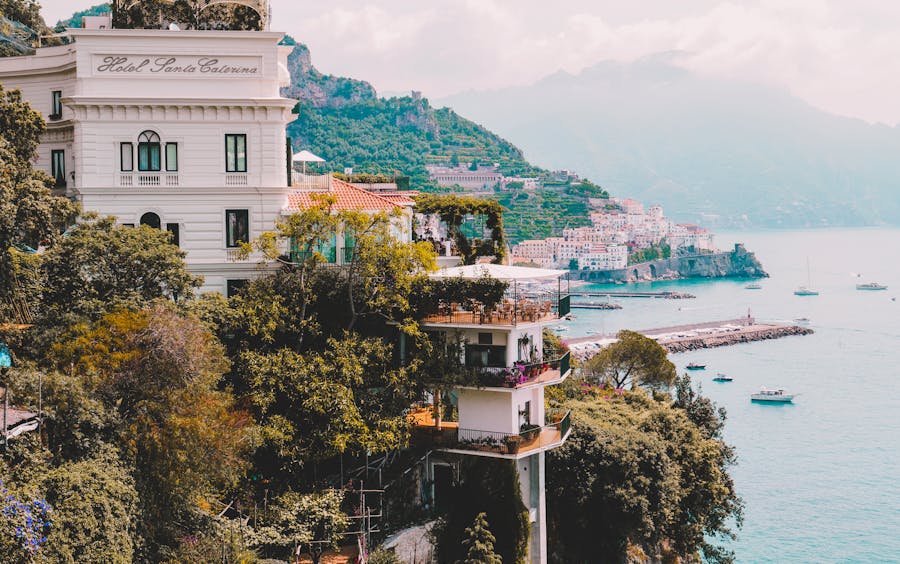
Fresh seafood takes center stage in Positano’s restaurant scene. Many eateries feature catch-of-the-day specials brought in by local fishermen each morning.
Le Sirenuse‘s Michelin-starred restaurant stands out as one of the town’s most prestigious dining spots. The restaurant pairs amazing food with stunning views across the bay.
Beach clubs like Da Adolfo serve simple yet tasty dishes right on the sand. Their specialty is mozzarella grilled on lemon leaves.
Local trattorias tucked into the steep streets offer hearty pasta dishes made with regional ingredients. Popular choices include scialatielli (thick hand-rolled pasta) with seafood and local cherry tomatoes.
Gastronomic Delights of Ravello
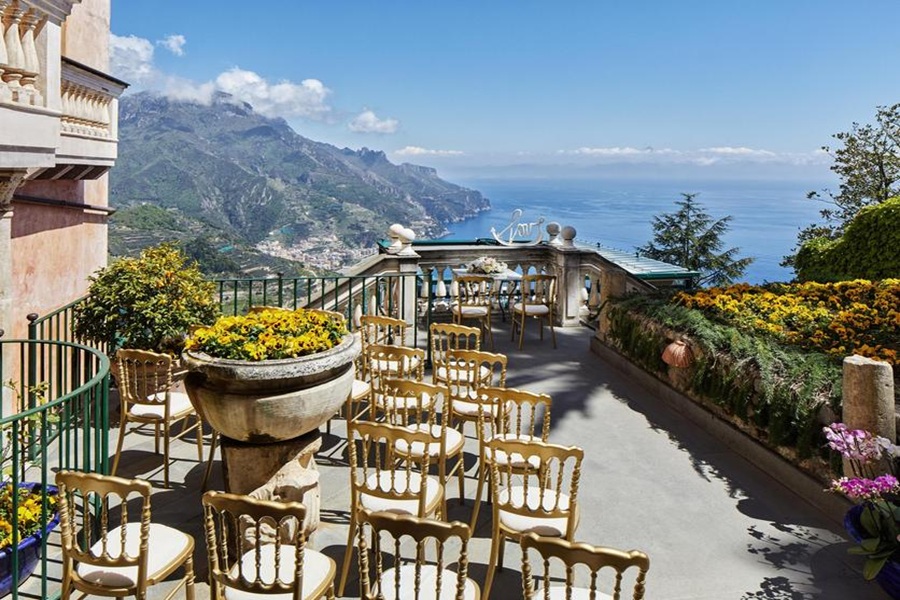
Ravello’s restaurants tend to be more intimate and exclusive than those in Positano. Many feature garden terraces with views of the coastline below.
The town is famous for its wine bars that serve excellent local vintages from the Campania region. These pair perfectly with regional cheeses and cured meats.
Family-run establishments prepare traditional dishes like pasta alla Genovese (slow-cooked onion and beef sauce) and fresh buffalo mozzarella from nearby farms.
Several upscale hotel restaurants offer refined versions of classic Italian dishes. The dining room at Palazzo Avino is especially noted for its creative takes on regional recipes.
Leisure Activities
Whether seeking active water adventures or peaceful cultural experiences, both towns offer distinct leisure options that appeal to different types of travelers.
Exploring the Waters of the Amalfi Coast
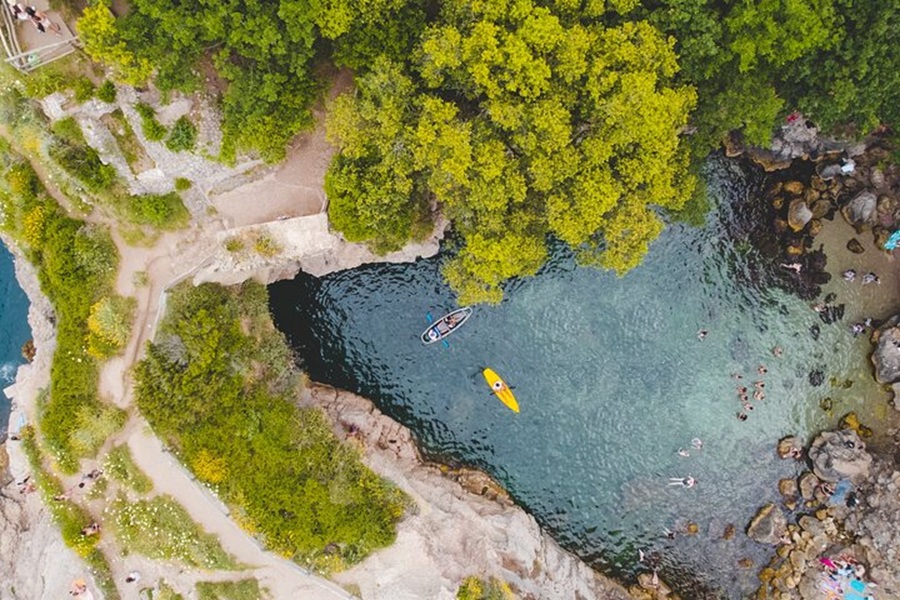
Positano shines as a water sports paradise. The town’s central beach, Marina Grande, buzzes with boat rentals and water excursions. Visitors can rent kayaks to explore hidden coves or join guided tours to the emerald grottos.
Swimming spots dot the coastline near Positano. Fornillo Beach offers a quieter alternative to Marina Grande, with crystal-clear waters perfect for snorkeling.
Ravello sits high above the sea, so beach access requires a trip down to Amalfi or Minori. The views make up for this distance – swimmers can plan day trips to beaches below while enjoying the spectacular vistas from above.
Shopping and Leisure in Ravello and Positano
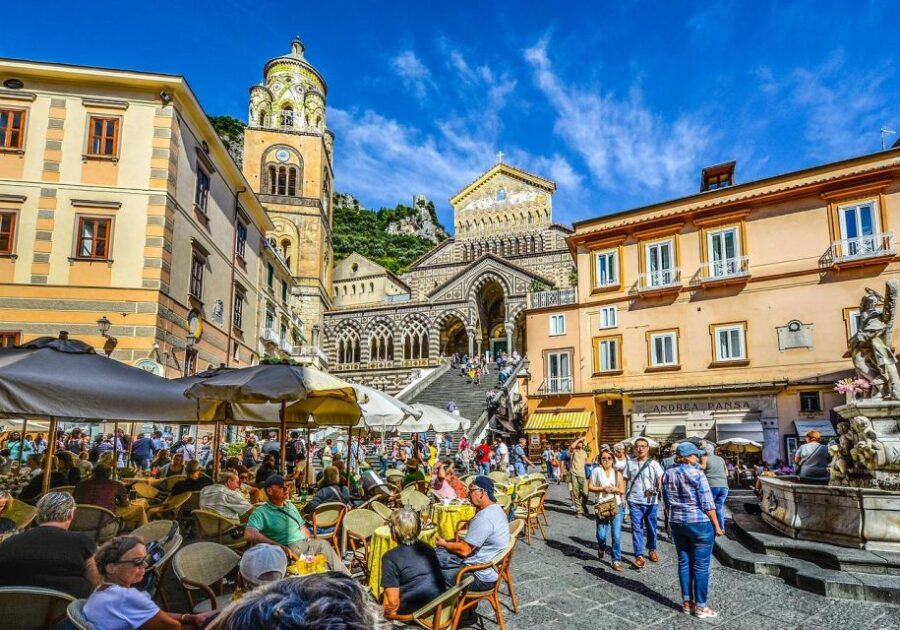
Positano’s narrow streets overflow with boutiques selling handmade sandals, flowing linen clothing, and colorful ceramics. The town’s fashion scene dates back to the 1960s when it became popular with celebrities.
Ravello offers a more refined shopping experience. Local artisans craft delicate ceramics and intricate lacework in small workshops. The town’s art galleries showcase regional talent.
Villa Rufolo and Villa Cimbrone in Ravello provide peaceful gardens for afternoon strolls. These historic estates offer perfect spots for reading or sketching while taking in coastal views.
Best Times to Visit
The seasons bring distinct experiences to both Positano and Ravello, with summer drawing peak crowds while spring and fall offer milder weather and fewer tourists.
Seasonal Considerations for Positano
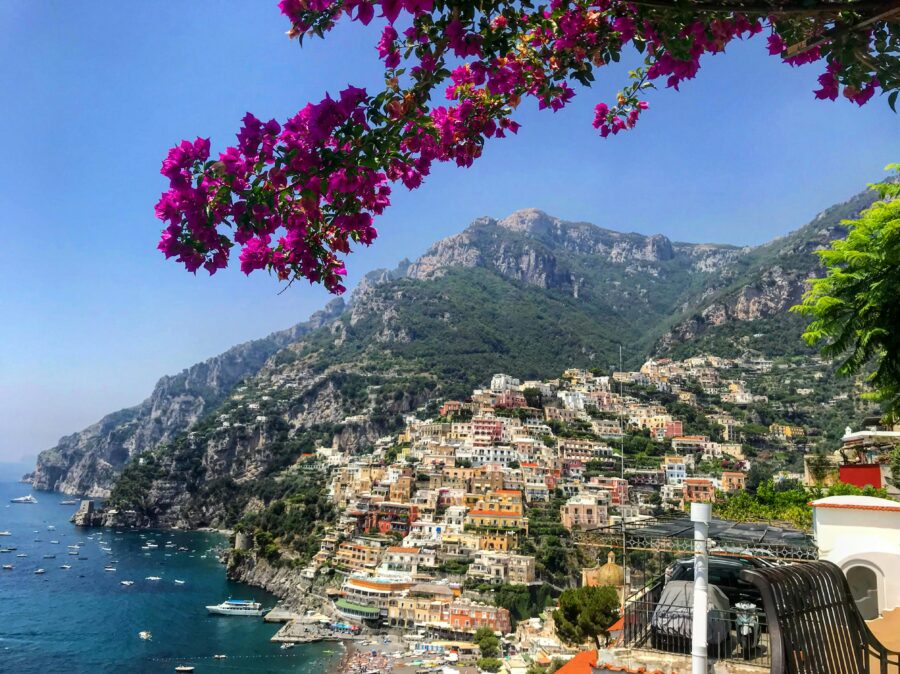
Peak season in Positano runs from June through August. The weather is perfect for swimming and beach activities, with temperatures ranging from 75-85°F (24-29°C).
Spring (April-May) brings comfortable temperatures and blooming flowers. The beaches aren’t too crowded, and hotels offer better rates than summer.
Fall visits in September and October let travelers enjoy warm sea temperatures and sunny days. Most restaurants and shops stay open, while tourist numbers drop significantly.
Winter months (November-March) are quiet, with many businesses closed. Some hotels and restaurants shut down entirely from December through February.
Choosing the Right Time for Ravello
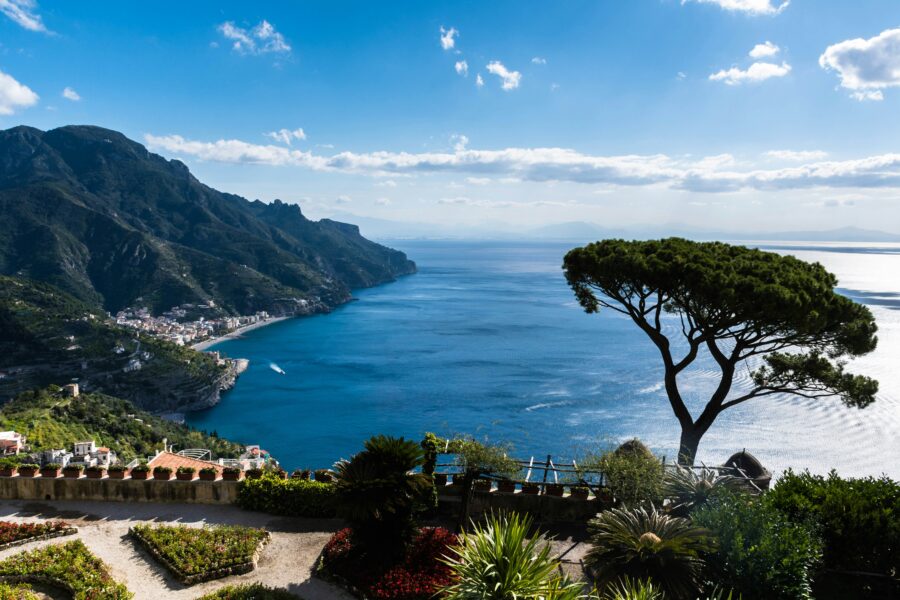
Ravello’s hilltop location means it stays cooler than coastal towns in summer. In June through August, temperatures around 70-80°F (21-27°C) are ideal for exploring gardens and villas.
Spring brings perfect conditions for walking tours and photography. The famous Villa Cimbrone and Villa Rufolo gardens showcase their best colors in April and May.
September and October offer clear skies and mild temperatures. These months are perfect for outdoor concerts at the Ravello Festival venues.
Unlike Positano, Ravello maintains its charm year-round. Even in winter, visitors can enjoy peaceful walks and stunning views without coastal weather issues.
Conclusion
Both Positano and Ravello shine as stunning destinations on the Amalfi Coast, each with unique charms that set them apart.
Positano wins for beach lovers and those seeking vibrant coastal energy. Its colorful buildings, buzzing streets, and easy beach access make it perfect for first-time visitors who want that classic Amalfi Coast experience.
Ravello sits like a peaceful retreat high above the sea. Its elegant gardens, classical music concerts, and breathtaking views attract travelers looking for quiet sophistication away from the crowds.
Getting to Positano is simpler, with direct ferries and buses from major hubs. Ravello needs extra planning since it requires a connection through Amalfi town.
Choose Positano if you want:
- Easy beach access
- Lively atmosphere
- Better transport connections
- More dining and shopping options
Choose Ravello if you prefer:
- Peaceful mountain setting
- Cultural events and gardens
- Less crowded streets
- More affordable lodging
The best choice depends on your travel style. Active beach lovers should pick Positano, while those seeking tranquil luxury will feel at home in Ravello.
Frequently Asked Questions
Many travelers face common choices when planning their Amalfi Coast adventures. These questions tackle key differences in beaches, views, hotels, and travel logistics between these two iconic towns.
What are the unique experiences Positano offers compared to Ravello?
Positano features direct beach access and vibrant coastal life. The town’s colorful homes cascade down the cliffs toward the sea, creating perfect photo spots.
At Spiaggia Grande beach, visitors can enjoy crystal-clear waters for swimming and sunbathing. The seaside restaurants also serve fresh seafood caught that morning.
The bustling streets offer high-end boutique shopping, with local artisans selling handmade sandals and linen clothing.
How do the vibes and attractions in Ravello differ from those in Positano?
Ravello sits high in the mountains, offering peaceful gardens and classical music concerts. Villa Rufolo and Villa Cimbrone provide stunning panoramic views of the coastline.
The town feels more tranquil and romantic than Positano. Art galleries and historic churches also dot the streets around the main square.
Can you describe the logistical differences between traveling to Positano and Ravello?
Positano connects easily to other towns via ferry and SITA bus. The nearest train station is in Sorrento, followed by a 45-minute bus ride.
Ravello requires more planning to reach. Visitors must take a bus or car up winding mountain roads from Amalfi town. The journey takes about 25 minutes.
What kind of accommodation options can one expect in Ravello versus Positano?
Positano offers more hotel choices across all price ranges. Many rooms feature private balconies with sea views.
Ravello specializes in luxury villas and boutique hotels. The properties tend to be smaller but more exclusive, with spectacular mountain-top vistas.
How can travelers plan a seamless day trip to Positano, Amalfi, and Ravello?
Start early in Positano to explore the beach and shops. Then, take a mid-morning ferry to Amalfi town.
After lunch in Amalfi, catch the bus up to Ravello. Spend the afternoon visiting the villas and gardens before returning to base.
Are there certain times of the year when visiting Positano or Ravello is particularly recommended?
May and September offer perfect weather and fewer crowds. The water stays warm enough for swimming.
July and August bring intense heat and peak tourist numbers. Winter visits work better in Ravello since Positano largely closes down.
Spring brings beautiful flowers to Ravello’s gardens. The Ravello Festival runs through summer with outdoor concerts.
